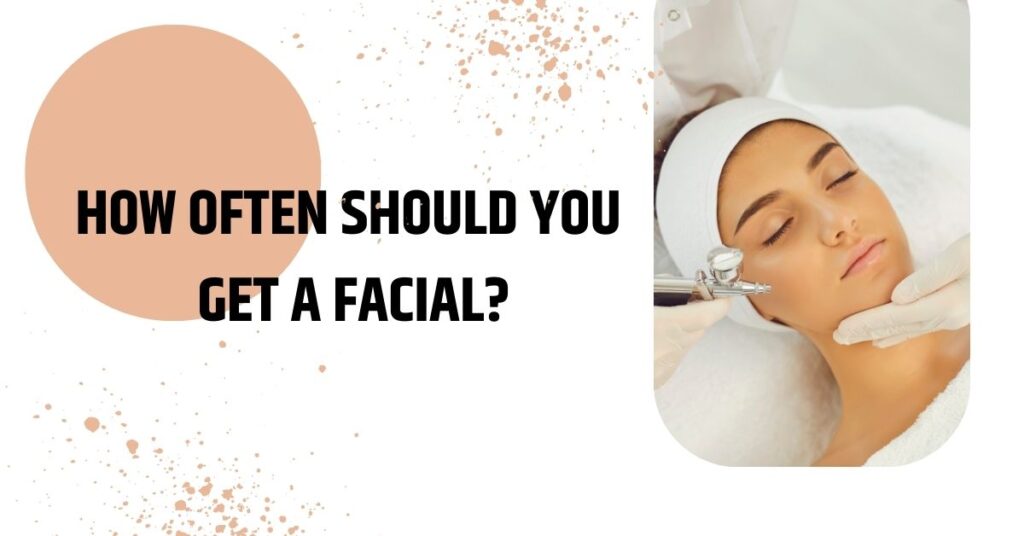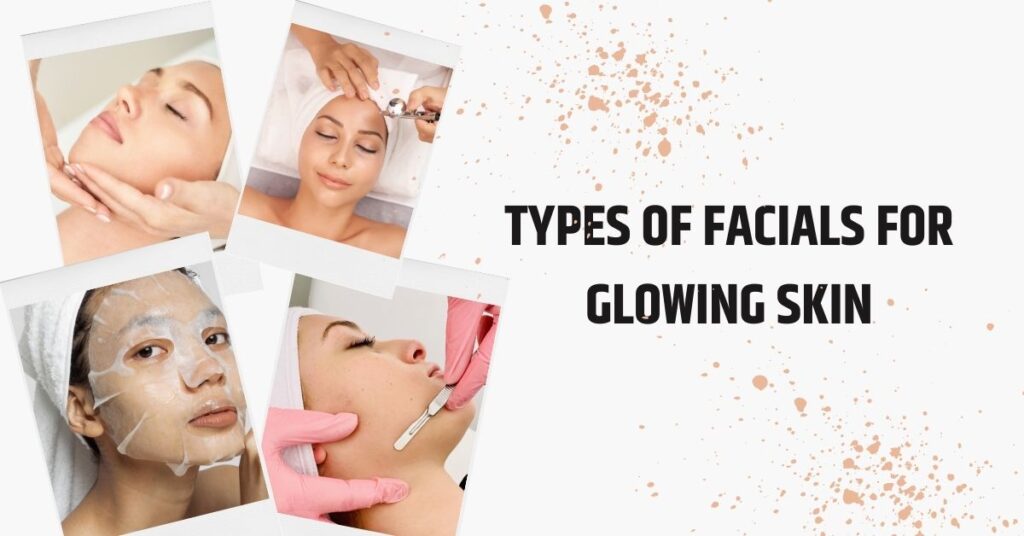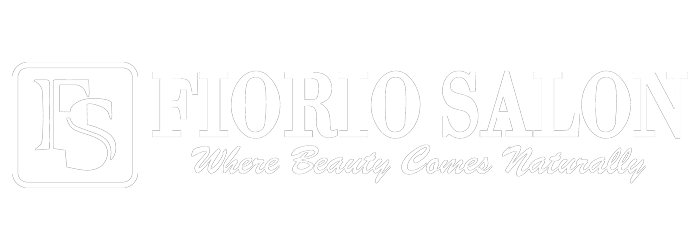8 best types of facials for glowing skin in 2024
Introduction
Achieving glowing, radiant skin is a common desire for many people, and fortunately, there are numerous ways to attain it. One popular method is through facials, which offer deep cleansing, exfoliation, and nourishment to the skin. However, with the abundance of facial options available, choosing the right one for optimal results can be daunting.
It’s crucial to identify the facial that best suits your skin type and addresses your specific concerns. In this article, we’ll explore the top facials for achieving a glowing complexion and promoting overall skin health. Whether you have oily, dry, or combination skin, there’s a facial out there to help you achieve the results you desire. Let’s delve into the world of skincare and discover the best facials for achieving radiant skin.
How do facials help in glowing skin?
Facials play a crucial role in achieving glowing skin by addressing various skin concerns and promoting overall skin health. Here’s how facials contribute to glowing skin:
- Deep Cleansing: Facials perform thorough cleansing, eliminating dirt, oil, and dead skin cells from the face. This deep cleansing action leaves the skin refreshed and rejuvenated, enhancing its natural radiance.
- Exfoliation: Through exfoliation, facials remove the top layer of dead skin cells, promoting cell turnover and revealing fresh, radiant skin underneath. This process helps unclog pores, reduce fine lines and wrinkles, and improve the skin’s texture and tone.
- Improved Circulation: Certain facials are designed to enhance blood circulation in the face, ensuring better oxygen and nutrient delivery to the skin cells. Improved circulation helps maintain skin moisture levels, reduces puffiness and swelling, and promotes a healthy, vibrant complexion.
- Stress Relief: Beyond its skincare benefits, facials offer a soothing and stress-relieving experience. The gentle massage techniques used during facials help alleviate tension, promote relaxation, and induce a sense of calmness. This stress-relieving aspect of facials contributes to overall skin wellness and radiance.
In summary, facials provide a multi-faceted approach to skincare, offering deep cleansing, exfoliation, improved circulation, and stress relief. Incorporating facials into your skincare routine can help you achieve and maintain glowing, healthy skin.
How often should you get a facial?

The ideal frequency for getting facials varies depending on individual skin types and specific concerns. Generally, it’s advisable to schedule facials every 4-5 weeks to maintain optimal skin health and radiance.
For those with oily or acne-prone skin, more frequent facials, such as every 2-3 weeks, may be beneficial in controlling excess oil production and preventing breakouts. Conversely, individuals with sensitive or dry skin should limit facials to once a month to prevent overstimulation and irritation.
Regular facials play a vital role in unclogging pores, eliminating dead skin cells, and enhancing circulation, all of which contribute to a brighter, more youthful complexion. By adhering to a consistent facial schedule tailored to your skin’s needs, you can effectively address concerns and maintain healthy, glowing skin.
How To Pick the right facial for your skin

Choosing the appropriate facial for different skin types involves considering specific skin concerns and desired outcomes. Here are some guidelines to help you pick the right facial:
- Identify Skin Type: Determine whether your skin is oily, dry, combination, sensitive, or acne-prone. Understanding your skin type is crucial for selecting a facial treatment that addresses your specific needs.
- Assess Skin Concerns: Take note of any particular skin issues you want to address, such as acne, fine lines, hyperpigmentation, or dehydration. Different facials target specific concerns, so it’s essential to match the treatment to your primary skin goals.
- Consultation with a Professional: Schedule a consultation with a licensed esthetician or dermatologist. They can assess your skin condition and recommend suitable facials based on their expertise and your skin’s needs.
- Consider Facial Types: There are various types of facials available, including hydrating, deep-cleansing, exfoliating, anti-aging, brightening, and acne-fighting facials. Choose a facial type that aligns with your skin type and concerns.
- Ingredients and Formulations: Pay attention to the ingredients and formulations used in the facial products. For example, opt for hydrating facials with ingredients like hyaluronic acid for dry skin or salicylic acid for acne-prone skin.
- Customize Treatment: Many spas and skincare clinics offer customizable facials tailored to individual skin concerns. Discuss your preferences and concerns with the esthetician to create a personalized treatment plan.
- Consider Sensitivities: If you have sensitive skin or allergies, inform your esthetician beforehand to avoid any potential adverse reactions. Opt for gentle, fragrance-free products and treatments suitable for sensitive skin.
- Test Patch: Before undergoing a new facial treatment, consider requesting a patch test to assess how your skin reacts to the products used. This can help prevent unexpected allergic reactions or sensitivities.
By following these steps and seeking professional guidance, you can select the right facial treatment that effectively addresses your skin’s needs and helps you achieve healthy, radiant skin.
8 best types of facials for glowing skin

1. Chemical Peels
A chemical peel involves the application of a chemical solution to the skin, which helps exfoliate and remove dead skin cells. This process promotes skin regeneration and reveals a smoother, more radiant complexion. Chemical peels can address various skin concerns, including acne, hyperpigmentation, and fine lines, depending on the strength and type of peel used.
2. Microdermabrasion
Microdermabrasion is a non-invasive exfoliating treatment that uses a diamond-tipped wand or fine crystals to gently remove the outer layer of dead skin cells. This procedure stimulates collagen production, improves skin texture, and reduces the appearance of fine lines, wrinkles, and acne scars. It can also enhance the effectiveness of skincare products by allowing deeper penetration into the skin.
3. Hydrating Facials
Hydrating facials focus on replenishing moisture in the skin to restore hydration levels and improve skin texture. These facials typically involve the use of hydrating masks, serums, and moisturizers enriched with ingredients like hyaluronic acid, glycerin, and antioxidants. They help nourish and soothe the skin, leaving it soft, supple, and radiant.
4. LED Light Therapy
LED light therapy utilizes different wavelengths of light to target specific skin concerns, such as acne, inflammation, and aging. Red light stimulates collagen production and promotes healing, while blue light kills acne-causing bacteria and reduces breakouts. LED therapy is non-invasive and can be customized to suit individual skin needs.
5. Oxygen Facials
Oxygen facials deliver a stream of pressurized oxygen infused with vitamins, minerals, and botanical extracts to the skin. This treatment helps boost circulation, promote collagen production, and improve skin tone and elasticity. Oxygen facials are suitable for all skin types and can provide an instant glow and radiance to the complexion.
6. Dermaplaning
Dermaplaning is a manual exfoliation technique that uses a sterile surgical scalpel to remove dead skin cells and vellus hair (peach fuzz) from the surface of the skin. This treatment leaves the skin smooth, soft, and radiant, and enhances the penetration of skincare products. Dermaplaning also helps improve the appearance of fine lines, wrinkles, and acne scars.
7. Radiofrequency Skin Tightening
Radiofrequency (RF) skin tightening is a non-invasive procedure that uses radiofrequency energy to heat the deep layers of the skin, stimulating collagen production and tightening loose or sagging skin. This treatment helps improve skin firmness, elasticity, and overall texture, resulting in a more youthful and lifted appearance.
8. Microneedling
Microneedling, also known as collagen induction therapy, involves the use of tiny, sterile needles to create micro-injuries in the skin. This process triggers the body’s natural healing response, stimulating collagen and elastin production. Microneedling can improve skin texture, reduce the appearance of scars, wrinkles, and hyperpigmentation, and enhance overall skin tone and radiance.
Essential Post-Facial Care Tips for Radiant, Healthy Skin
Best Practices:
-
- Prioritize Hydration: Ensure you drink an ample amount of water to keep your skin hydrated and replenished from within.
-
- Opt for Gentle Products: Choose skincare products formulated with gentle, nourishing ingredients to soothe and support your skin post-facial.
-
- Shield Your Skin: Apply a broad-spectrum sunscreen with at least SPF 30 to shield your skin from harmful UV rays, especially if it has undergone exfoliating treatments.
-
- Maintain Moisture Levels: Incorporate a hydrating moisturizer into your skincare routine to maintain optimal moisture levels and prevent dryness.
-
- Follow Professional Advice: Adhere to any specific post-facial instructions provided by your esthetician, such as avoiding sun exposure or using particular skincare products.
-
- Practice Cleanliness: Maintain clean hands and refrain from touching your face excessively to minimize the risk of transferring bacteria and causing breakouts.
-
- Schedule Regular Maintenance: Book routine facial appointments to address ongoing skincare needs and sustain the health and appearance of your skin.
Avoid:
-
- Steer Clear of Harsh Ingredients: Avoid skincare products containing harsh chemicals or fragrances that may exacerbate sensitivity or irritation.
-
- Never Skip Sun Protection: Ensure consistent application of sunscreen post-facial, as heightened skin sensitivity increases susceptibility to sun damage.
-
- Moderate Exfoliation: Refrain from over-exfoliating or using abrasive scrubs immediately following a facial to prevent irritation or damage.
-
- Resist Temptation to Pick: Refrain from picking, squeezing, or scratching at blemishes or pimples to prevent scarring and infection.
-
- Protect Against Harsh Elements: Minimize exposure to extreme environmental conditions like extreme temperatures or pollution, which can exacerbate post-facial sensitivity.
-
- Lighten Makeup Load: Limit the use of heavy makeup products, particularly if your skin is in a sensitive state or recovering from treatment.
-
- Maintain Consistent Routine: Don’t neglect your regular skincare regimen post-facial; continue to cleanse, moisturize, and protect your skin to support its recovery and ongoing health.
Boost Your Glow with Fiorio Salon
Discover the perfect skincare match at Fiorio Salon. Our skilled team crafts every facial to suit your skin’s unique needs, whether it’s oily, dry, or a mix of both. With specially chosen products and personalized care, our facials deliver unbeatable results, leaving your skin radiant and refreshed. Treat yourself to a Fiorio Salon facial and leave feeling confident, glowing, and pampered.
FAQ’s
Question: What is a facial?
Answer: A facial is a skincare treatment performed by a licensed esthetician to cleanse, exfoliate, and nourish the skin. It typically involves a series of steps tailored to address specific skin concerns and promote overall skin health and rejuvenation.
Question: How often should I get a facial?
Answer: The frequency of facials depends on individual skin needs and concerns. As a general guideline, it’s recommended to get a facial every 4-6 weeks to maintain healthy skin. However, the frequency may vary based on factors such as skin type, lifestyle, and specific treatment goals.
Question: What are the benefits of getting a facial?
Answer: Facials offer numerous benefits for the skin, including deep cleansing, exfoliation, hydration, and rejuvenation. They can help improve skin texture, tone, and clarity, reduce signs of aging, unclog pores, and promote a radiant complexion. Additionally, facials provide relaxation and stress relief, contributing to overall well-being.
Question: Are there any side effects of facials?
Answer: While facials are generally safe, some individuals may experience mild side effects such as redness, sensitivity, or temporary breakouts, especially after more intensive treatments. These side effects typically subside within a few days. However, it’s essential to communicate any concerns or adverse reactions with your esthetician.
Question: How do I prepare for a facial?
Answer: To prepare for a facial, it’s advisable to arrive with clean skin free of makeup and skincare products. Communicate any specific skin concerns or allergies to your esthetician before the treatment. Additionally, avoid sun exposure, exfoliation, or other harsh treatments leading up to your appointment to prevent skin irritation.
Question: Can anyone get a facial?
Answer: Yes, facials are suitable for most skin types and conditions. However, individuals with certain medical conditions or skin conditions like sunburn, active acne, or open wounds may need to postpone their facial appointment. It’s always best to consult with a skincare professional to determine the most appropriate treatment for your skin.
